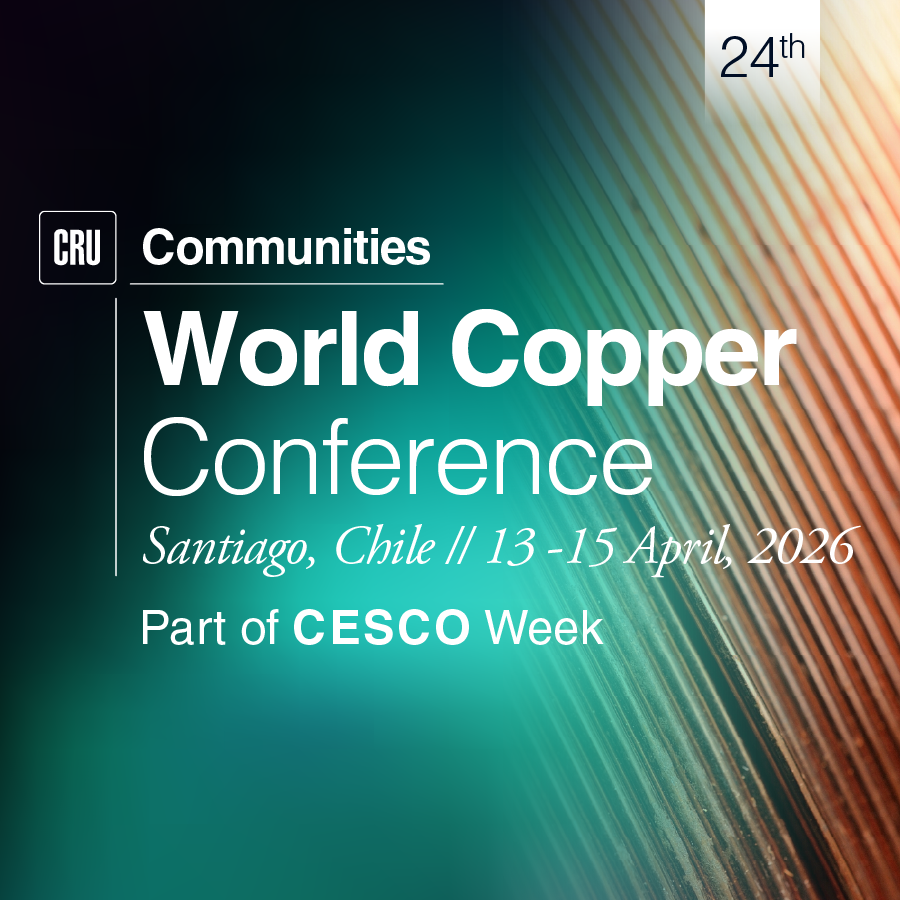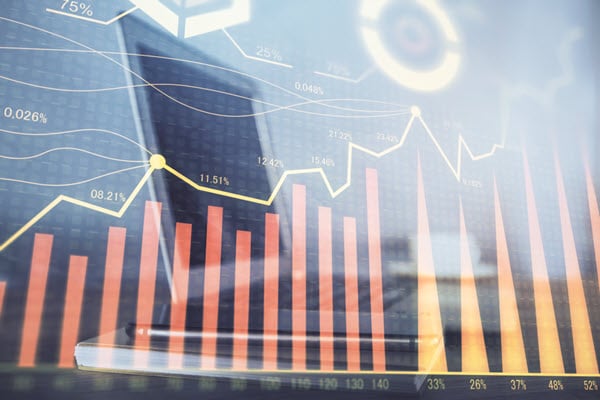Capital expenditure is a critical indicator of the health of the mining industry, and a key driver of business opportunities for investors and suppliers alike.
This insight provides a snapshot of CRU’s cutting-edge analysis of global investment trends spanning a range of bulk, base and precious metals. While investment levels are not expected to reach those observed in the halcyonic days of the early 2010’s, CRU nonetheless forecast steady investment growth over the medium term, with opportunities particularly centred on base and precious metals and in regions such as Latin America and Asia.
The current Covid-19 crisis is likely to have lasting effects on the metals & mining sector, but these are yet to crystallise and are not factored in this analysis. Going forward, CRU’s core mission of monitoring markets and forecasting means we are best placed to analyse how investments will reshape.
Capex outlook is key for investors and suppliers
Capital expenditure (“capex”) is a critical indicator of the health of the mining industry, and a key driver of business opportunities for investors and suppliers alike. This information is challenging to acquire and analyse, given the multiplicity of current and prospective mining assets, technologies and data sources.
CRU has invested heavily in developing our capital expenditure forecasts, developed as part of efforts to serve to clients focused on optimising capital allocation by commodity and geography. Building on our detailed market intelligence, data and cost assessment methodologies, CRU offer independent, in depth and appropriated “risked” views of capital expenditure across geographies, commodities and project types.
Investments in precious and base metals will grow
Coming into 2020, the market sentiment on the future mining industry has degraded compare to 2019. But what does it mean for the medium-term investments? CRU expects global capex to grow at a CAGR of 2.0% p.a. over the 2019-2024 period, but levels of investments remain 35% lower than the heights of the previous mining cycle in 2011-2015. Growth will mainly be driven by sustaining capex, not development capex, as companies will keep focusing on existing operations.
Globally, precious metals are expected to display the highest total capex growth to 2024 at 3.3% p.a., slightly outpacing base metals; while investments in bulk commodities will marginally contract.
Where will investments be directed?
Regionally, South & Central America, Asia (excluding China & India) and North America will see the largest capex gains, with the former two regions displaying above 6% p.a. growth and just below 2% p.a. for the latter. Europe, and to a lesser extent, China, will see capex spending decrease over the period.
Copper and gold will be the main engines of growth in South & Central America while the main uncertainty revolves around the delay of new lithium expansions and projects in a context of depressed lithium prices. Putting China and India aside, Indonesia and its nickel industry are a key driver of regional growth as NPI demand for the stainless-steel market remains solid and investments in HPAL plants to produce battery nickel sulphate are progressively increasing.
On the other side of the spectrum, we expect a slowdown in investments towards coal and base metals in both Europe and China that will result in capex losses.
What metal will see the highest capex growth?
There is also a large disparity in investment growth for each individual commodity as shown below.
Copper and gold are the leading commodities in terms of attractiveness with capex growth above 4% p.a. to 2024. South & Central America will be a key growth zone for both metals, even more so for copper since remaining 50% of global copper capex is spent in this region. North America will retain the largest share of global gold capex spending at around 25-30% as large project like IAMGOLD’s Côté Gold and Seabridge Gold’s Kerr-Sulphurets are likely to come online.
However, we expect growth in zinc and coal capex to perform poorly. Zinc is the weakest of the base metals in our forecast as due to the lack of visibility of the committed projects pipeline out to 2024. Coal capex is expected to stagnate to 2024. Global spending is split around 65%/35% for thermal / metallurgical coal and nearly half of these investments are destined to developments in China. Thermal coal is experiencing headwinds due to growing environmental concerns and coal financing being increasingly constrained in key producing regions. The picture for metallurgical coal is relatively rosier with higher spending in 2020-2022 period before returning to current levels after mines like BHP’s Caval Ridge expansion or Stanmore’s Isaac Plains mine in Australia come online.
Covid-19 is bound to reshape mining investments
It is still too early to fully grasp the medium-term impacts of the Covid-19 global crisis on the metals & mining sector. However, CRU constantly monitor mining commodity markets and, in the months ahead, we are ideally placed to analyse and forecast how future mining investments will reshape.

















